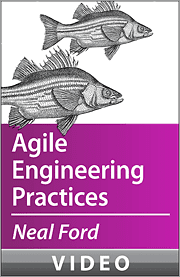- Регистрация
- 27 Авг 2018
- Сообщения
- 37,233
- Реакции
- 523,694
- Тема Автор Вы автор данного материала? |
- #1

Many people who explain agile software development often discuss project and planning practices, but hardly mention the development phase—as if actual development were an afterthought. In this insightful video, renowned software architect Neal Ford drills into the real details of agile engineering practices from a pure development perspective, based on work that he and others have done in the field.
Which development and design practices make the agile approach work? What are the pros and cons of feedback mechanisms? How do you test the entire stack? This video explores those questions and a host of related topics in depth.
- Learn best practices such as continuous integration, pair programming, and continuous delivery
- Discover how to interact with story cards and agile estimation
- Handle enterprise concerns like integration with other software packages
- Explore different version control strategies
- Delve into real-world problems, like convincing management that agile development is the way to go
- Evaluate the results of your development efforts
Project managers, business analysts, developers, and anyone else interested in the engineering practices common in Agile software development. This material discusses agile development and testing in both the concrete and abstract, covering both how and why things work on agile projects. Anyone interested in the mechanics of how to build software will find interesting food for thought.
High-level Outline:
- Introduction
- Why does agile software development work?
- Estimation
- Pair programming
- Continuous integration and deployment
- Version control strategies
- Testing the entire stack
- Design practices
- Emergent Design
- Evolutionary architecture
'Clearing a path from developer to architect and enriching that path once you arrive.'
Software architecture is a fast-moving, multidisciplinary subject where entire suites of “best practices” become obsolete practically overnight. No single path or curriculum exists, and different types of architecture—application, integration, enterprise—require different subject emphasis. Whether you’re at the outset of a career as an architect or in the midst of such a career, series editor Neal Ford has curated this collection of tools and guides for aspiring and seasoned architects alike.
SALES PAGE:
DOWNLOAD:


